College Students Studied These Mail-Order Sea Creatures in the Late 1800s
Restored glass models of marine invertebrates, made by artists Leopold and Rudolf Blaschka, are on display at the Harvard Museum of Natural History
In the late 1870s, a biology professor could purchase a glass model of an angel clubhook squid for $2.75. The going rate for an Atlantic white-spotted octopus was $1, and a fuzzy-tipped anemone cost $4, according to Henry Ward's mail-order catalog of glass invertebrates.
Around this time, people across the world had a new appetite for natural history. Museums were popping up full of taxidermied animals, but since actual specimens of marine invertebrates faded and shriveled in jars, there was suddenly a demand for glass models of jellyfish, squid, sea cucumbers and worms. Aquariums suspended the sculptures in displays, avoiding the costs of maintaining live animals. And professors at Harvard, Cornell and other universities purchased glass animals by the hundreds to use as educational tools.
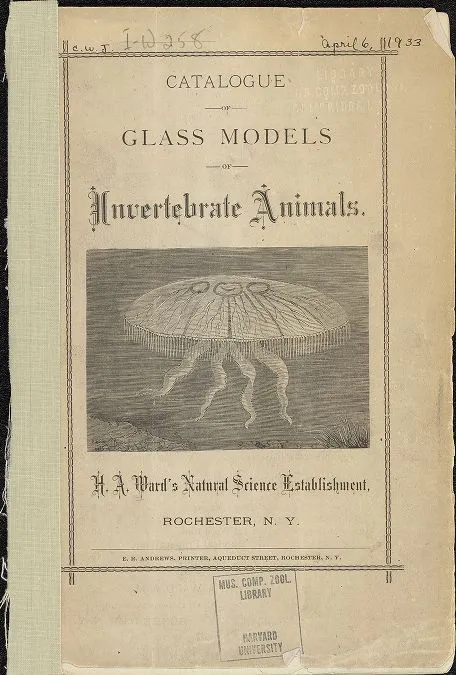
Two German glass artists, Leopold and Rudolf Blaschka, had a corner on the market. The father-son team started out making jewelry and glass eyes for the blind and taxidermy projects before taking on work for museums. Leopold, an amateur naturalist, created models of some 50 species of orchids in the mid-1850s, mostly for practice. Then he tested his skills out on sea anemones—a set of models that the Dresden Museum ultimately purchased. Leopold had some exposure to marine invertebrates, having traveled by ship to the United States in 1853 for pleasure. On that trip, he observed jellyfish and drew them from life. His son, Rudolf, studied zoology and anatomy, and the two expanded their repertoire. The 1878 catalog of glass invertebrates from Ward's Natural Science Establishment, a supplier of educational materials in Rochester, New York, lists a total of 630 Blaschka models.
To show how these soft-bodied animals look in the wild, the artists first melted pieces of glass over the flame of an alcohol lamp and shaped them into different anatomical features. They then melded the parts of the sea creatures together, attaching tiny tentacles with glue or copper wire.
The Blaschkas used scientific illustrations as reference—books like naturalist Philip Henry Gosse's Actinolgia Britannica: A History of British Sea Anemones and Corals—and sometimes even live animals. They kept a tank in their studio in Dresden stocked with various species.
The models, ranging from about one to eight inches in length, are exceptionally detailed. In some cases, the Blaschkas used colored glass, and in others, they handpainted the glass to resemble particular species. They often applied an egg wash to the glass to tone down its sheen and more accurately capture what the animal looked like in the water.
"An expert, an invertebrate zoologist, can see discrepancies because they know the animals much better," says Linda Ford, director of collections at Harvard's Museum of Comparative Zoology. "But if you put it in the time period for when it happened, it is pretty remarkable. They made them the best scientific rendition for the day."
Ford has overseen an eight-year effort to restore the 430 Blaschka models of marine and terrestrial invertebrates (there are some snails) at the Museum of Comparative Zoology. Louis Agassiz, MCZ's founder and first director, or his son and successor, Alexander, began acquiring the models in 1878, before Harvard would go on to commission the more famous glass flowers from the Blaschkas. The collection is now the second largest in the United States, after a sizeable trove at Cornell.
About 60 of the Blaschka invertebrates are on display in "Sea Creatures in Glass," a new permanent exhibition at the Harvard Museum of Natural History. The museum will rotate the models to show visitors the incredible variety of creatures in the collection and to protect any one from too much exposure to light.
MCZ hired Elizabeth Brill, a glass restoration expert from Corning, New York, to assess the condition of its sculptures. "She has a very interesting skill set," says Ford. "She is a preservation specialist, but she also works with glass herself. She understands the whole process, and then in her spare time she likes invertebrates. She knows enough about their anatomy to recognize a tentacle, or even to recognize the different kinds of invertebrates we have. It is a perfect combination."
Brill found evidence of crizzling on some of the Blaschka models. "Because of temperature and humidity issues, it makes the glass kind of look crackly," Ford explains. And some of the animal-hide glue that the Blaschkas used to assemble the models had failed in the hundred and some odd years since it was applied. "It's a very detailed and precise process to clean the glue off," says Ford. Brill, who has worked on Blaschka invertebrates at Cornell and elsewhere, reattached stray limbs and tentacles with archival-quality adhesive.
"In working with about 1,100 of these objects now, I find that there are little bits and pieces that have been tucked away in envelopes and bottle caps and little plastic boxes. It's like a giant jigsaw puzzle," Brill says in a video produced by the Harvard Museum of Natural History. "The tricky part about working with these models is that they are all made differently. They were made over the course of 25 years, and the two men who made them were working in different ways from one another. They were using different materials. It is really about evaluating each model as I come to it and treating it as a new object."
According to James Hanken, Harvard's Alexander Agassiz professor of zoology, the Blaschkas' scientifically accurate models of marine invertebrates provided a real service. "They're extremely effective teaching tools, even at the college level," he says. The Blaschkas tried to show the animals in life-like poses. Other times, they created models of dissected critters. A little sea squirt in the exhibition is opened up, so that viewers can see its internal organs.
"These things are still doing what they were made to do," says Brill.
/https://tf-cmsv2-smithsonianmag-media.s3.amazonaws.com/accounts/headshot/megan.png)
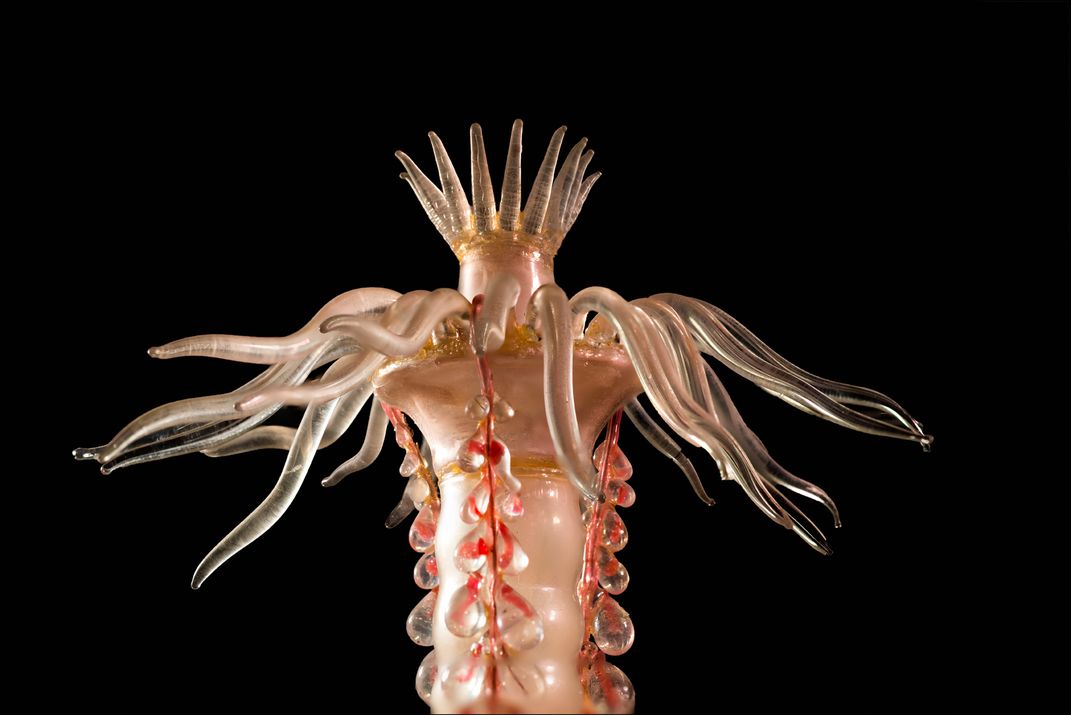
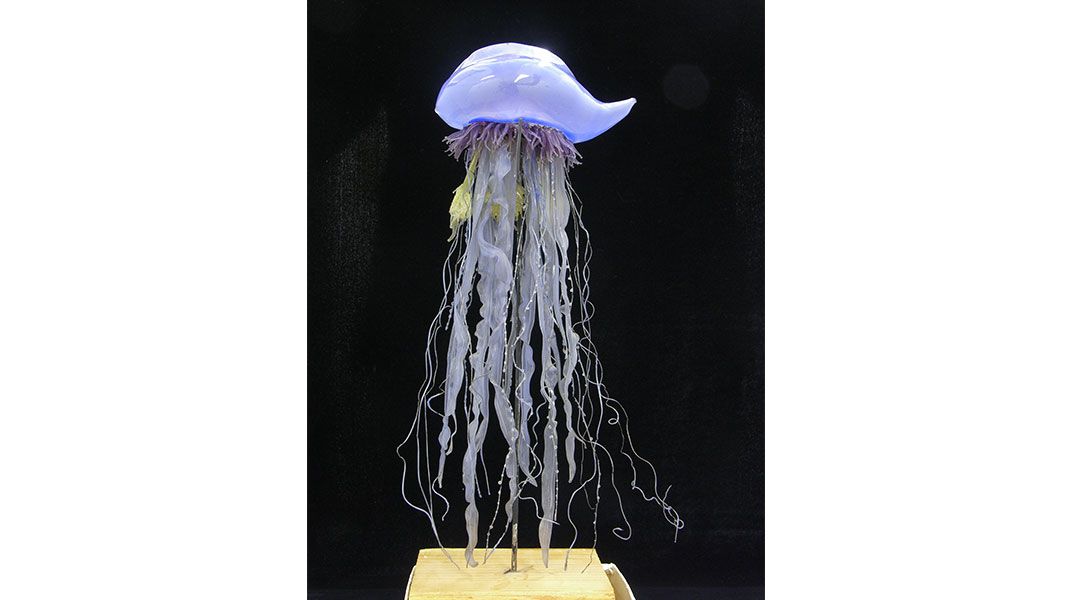
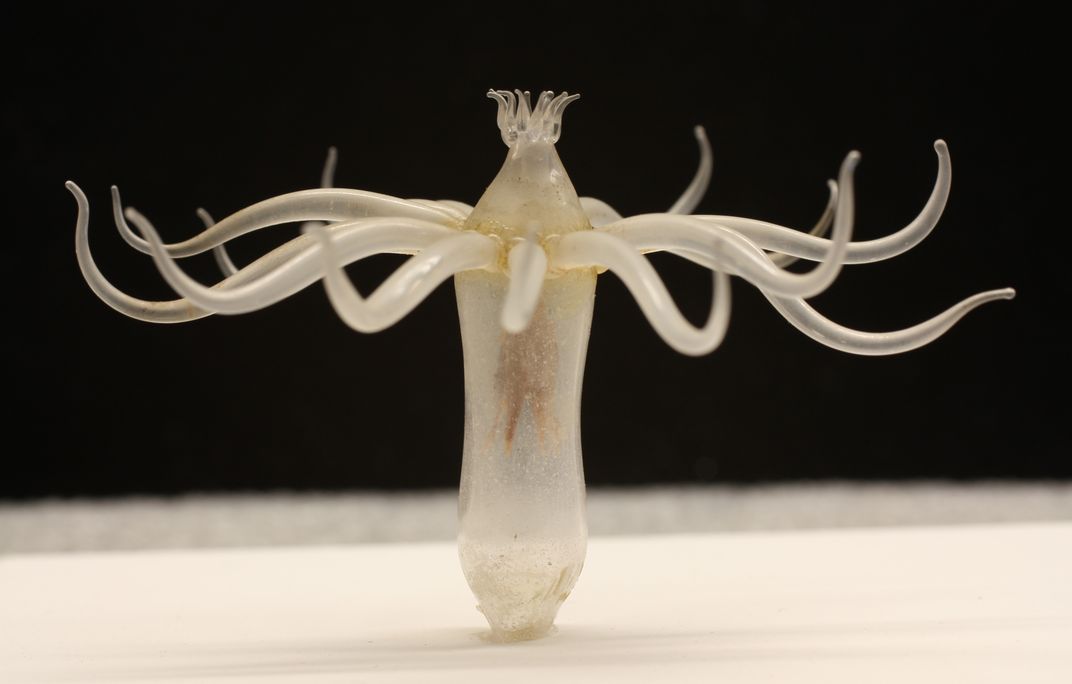
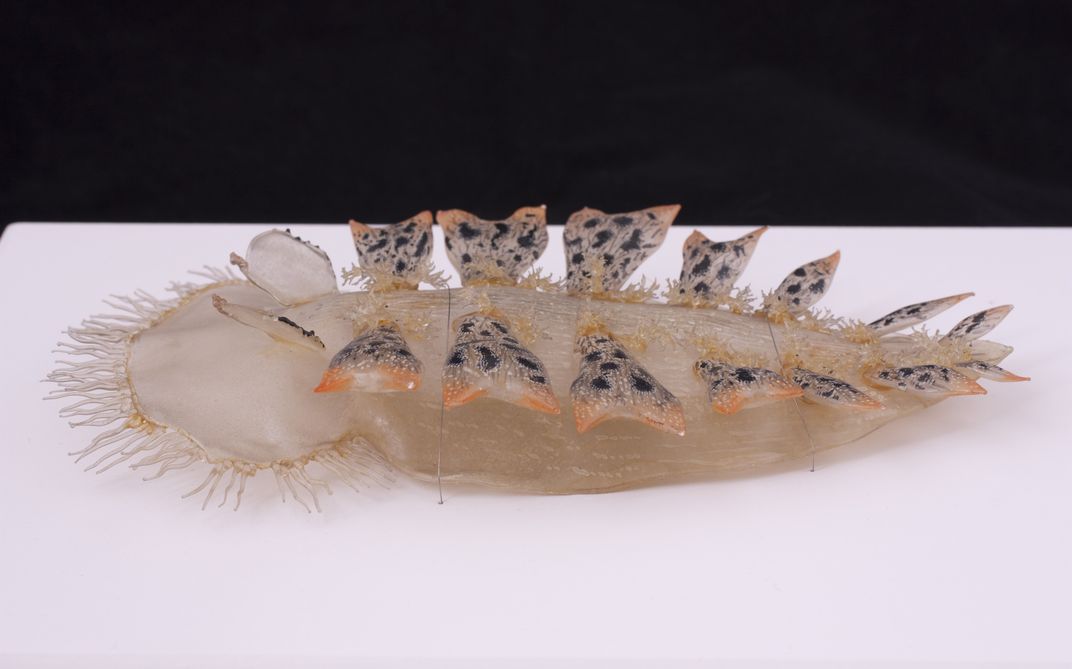
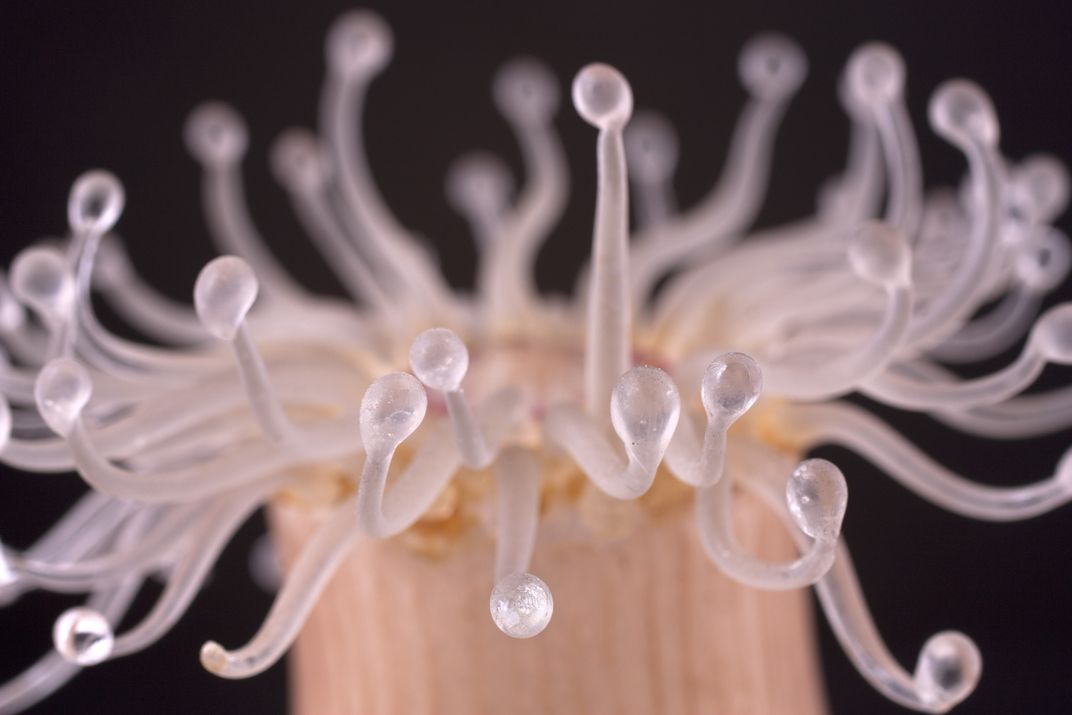
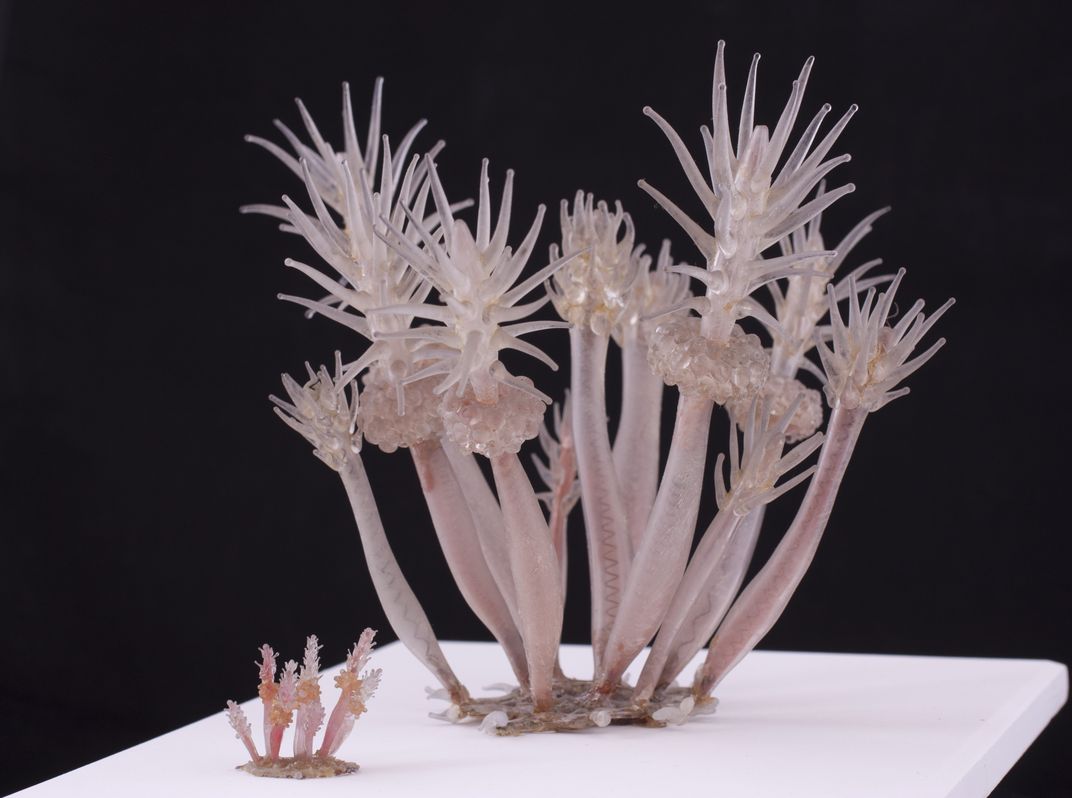
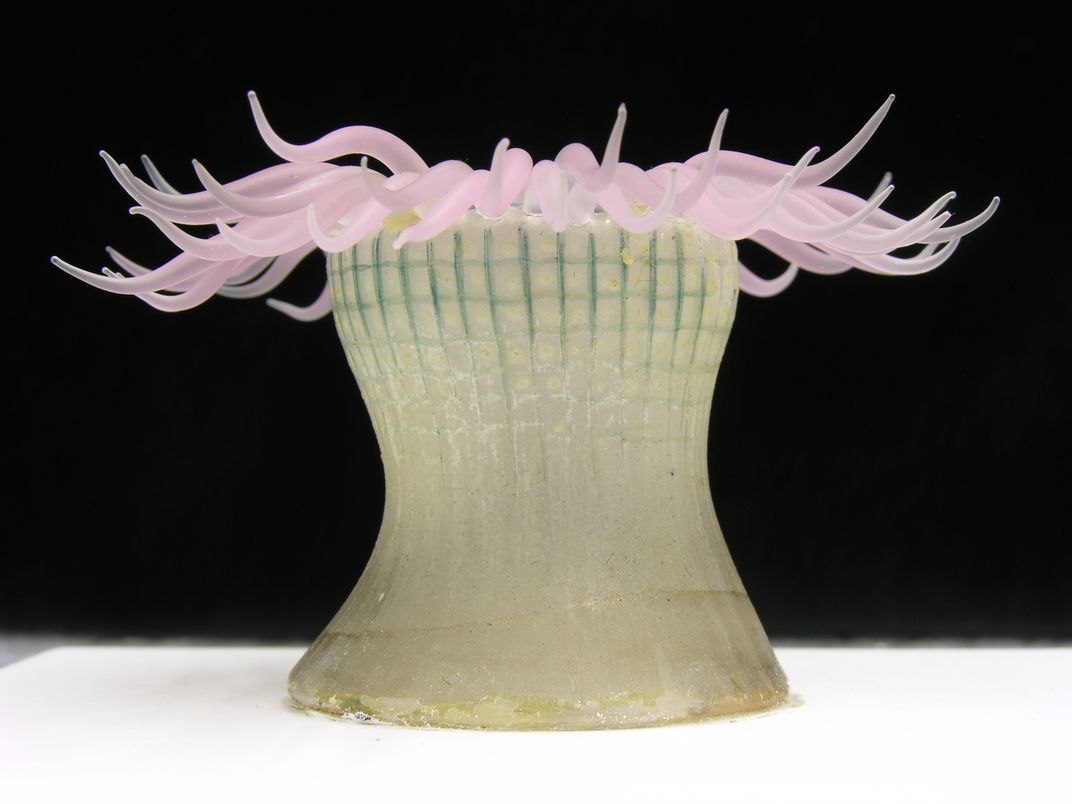
/https://tf-cmsv2-smithsonianmag-media.s3.amazonaws.com/accounts/headshot/megan.png)